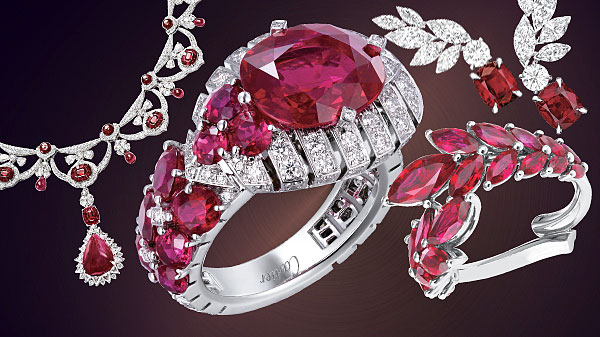While diamonds have long been said to be a girl’s best friend, it is the far rarer rubies that are now being seen as true objets de désir, both as alluring scarlet-hued adornments and as coveted collectors’ items.

Proving their desirability in the haute joaillerie market, one ring-set ruby– the Maniraja, unearthed from a legendary Myanmarese mine and weighing in at a colossal 13.26 carats – sold for a whopping HK$81.7 million at a Sotheby’s auction in Hong Kong a few years ago.

While its sky-high price may seem astonishing, it is worth bearing in mind that rubies command the highest per-carat price of any coloured gemstone. In fact, their precise colour is a hugely important factor in their value – the deeper the hue, the more coveted the ruby, with the exact shade of the very finest variety being somewhat unpleasantly likened to “the blood of a freshly-killed pigeon”.

More recently, their rarity and the continued growth in demand have led to inferior lab-created alternatives being ever more widely available. Sounding a word of warning in this regard, Elena Basaglia, manager of Gemfields, a London-based gemstone supplier, said: “Lab-created rubies have a very similar look to the natural ones and it is very difficult to differentiate between the two, especially with an untrained eye. As a result, it’s essential to check the provenance of any rubies you may buy. Ideally, purchase only from trusted outlets, allowing you to be sure both that it has been sourced responsibly and that they are of the stated quality.”

She adds: “Since production began at Gemfields’ operated ruby mine in Mozambique, the supply of responsibly sourced, high-quality rubies has become more dependable, allowing jewellers more freedom to create ruby jewellery, inspiring consumers and meeting the increased demand for these exquisite gemstones.”
Text: Suchetana Mukhopadhyay



